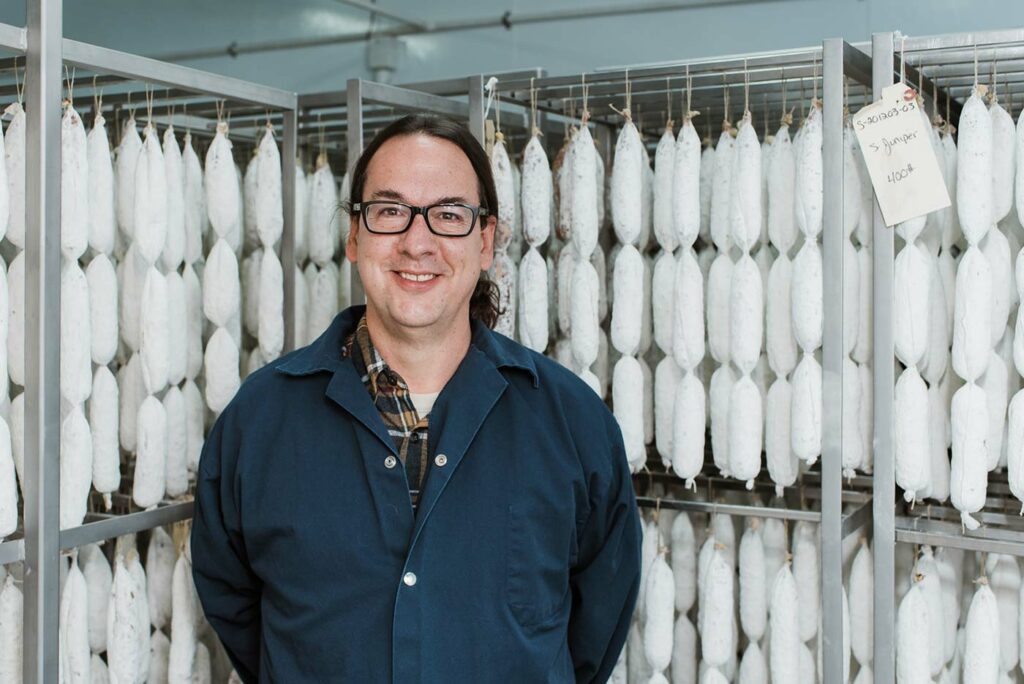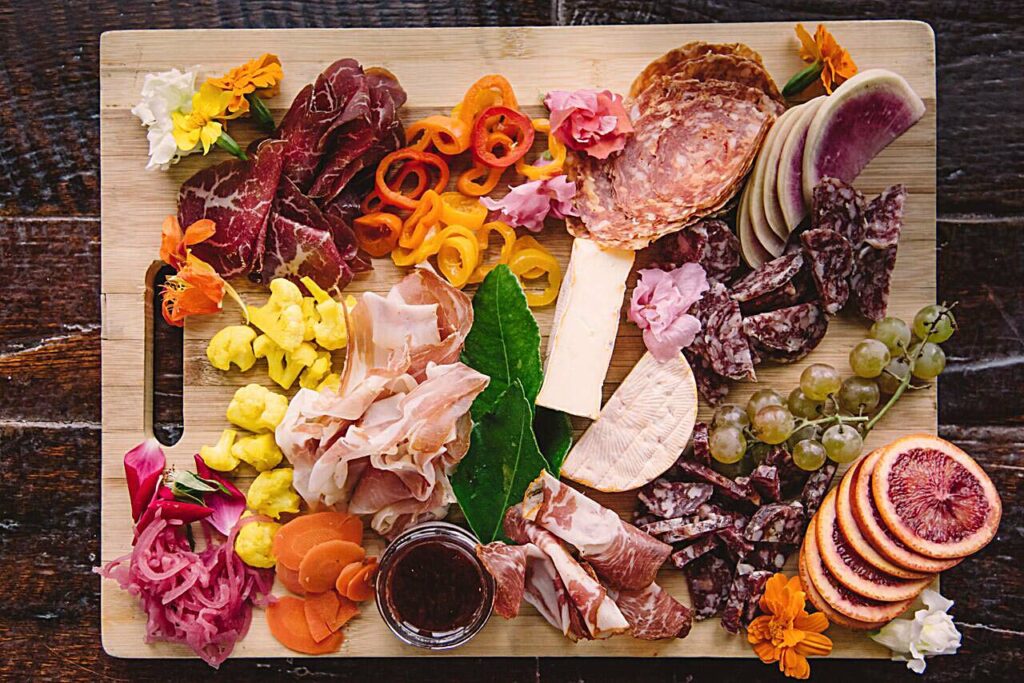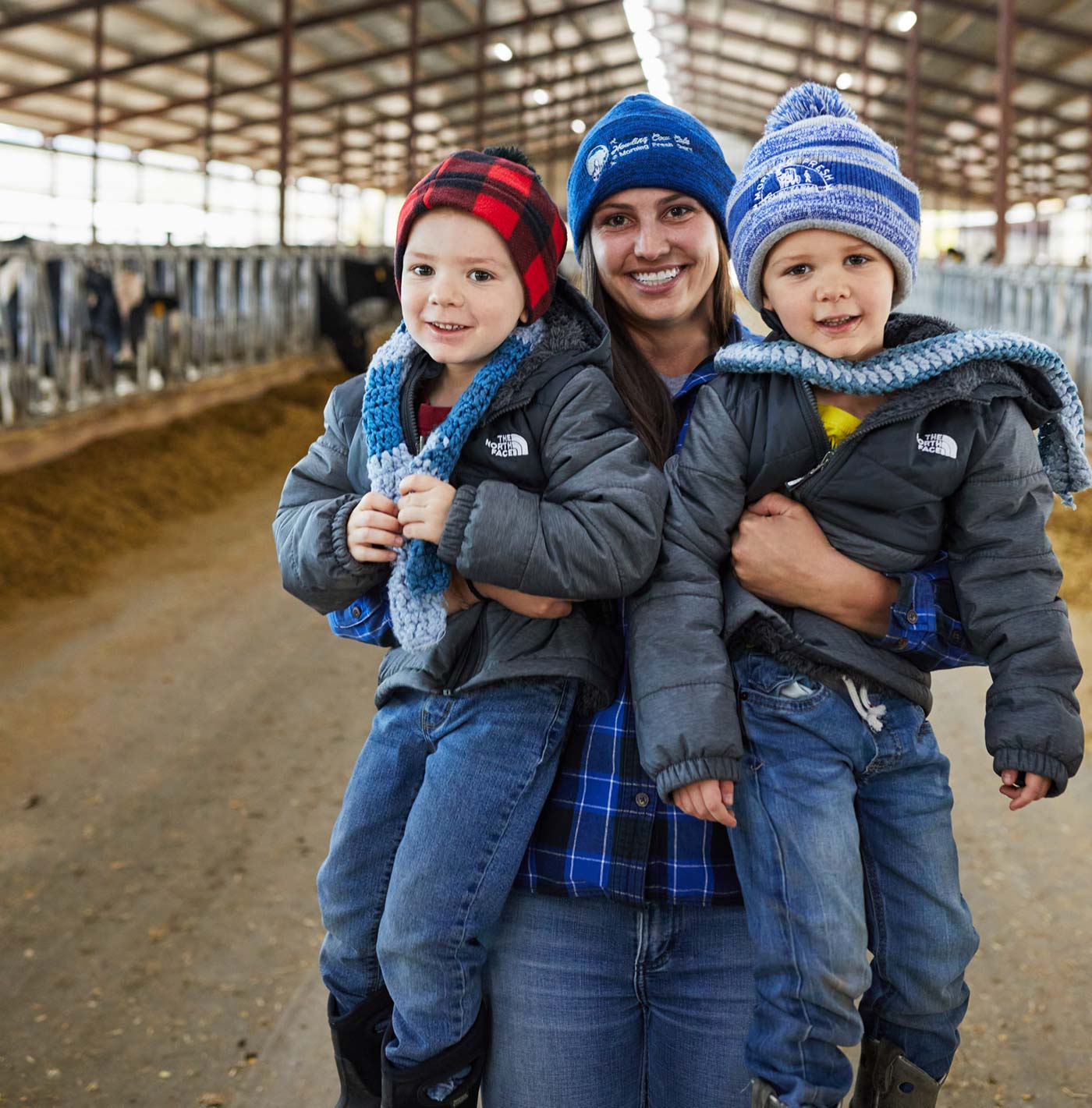Excellent charcuterie requires a time-consuming and exacting process. The craftsman must have the technical know-how to butcher animals and also develop recipes with precision. Then comes the part about patience. Once the product is ready for the curing room the meat is left to dry—or, as they call it in the industry, to cure. This process ranges from a few weeks to a couple of years.
It can take a lifetime to become a master of the craft. Bill Miner, owner of Ill Porcellino, a Denver-based charcuterie shop specializing in meticulously cured meats and carefully crafted sandwiches, says his passion for charcuterie began in 2012. As the executive chef of a local catering company, he spent the slower winter months teaching himself various charcuterie techniques. Through trial and error he began making smoked ham, mortadella, various types of sausage and dry-cured bresaola. He was fascinated by the process and pleased with the results. Things quickly evolved and he began making other whole-muscle products like lonza, country ham and coppa. Salami was the last technique he learned.
“Elias Cairo, the owner of Olympia Provisions, was an inspiration to me when I was younger,” says Miner. “His book taught me a lot about how to make salami. Now he is a peer and a friend who I admire a lot for how he has grown his company and stuck true to his roots of sourcing sustainably.”
Like his friend Cairo, Miner believes that to make the best-quality finished products, he must use the best-quality raw ingredients. All their pork is antibiotic- and hormone-free and certified humanely raised by the Global Animal Partnership (GAP) program. They source beef from 7X Cattle Company based in Hotchkiss, Colorado.

Pancetta, guanciale and a variety of salamis can be spotted from the street outside the Denver deli, hanging in a small room. The room itself is humid and warmer than you might expect. Miner explains that the moisture in the room comes from the hanging meat and is necessary for the quality of the finished product.
“If it is too dry in here, we would get meat that is hard on the outside but still raw in the middle. If too moist, they won’t dry out and we have to leave the door open.” The temperature is controlled carefully not with knobs, but traditionally, by allowing the moisture from the meat to create the proper environment for itself.
In 2017, Il Porcellino added a wholesale production facility in Basalt. Miner believes the altitude of the Basalt facility, which sits at 6,600 feet, closely mimics the mountains of Italy and Spain —countries that are historically known for their fine charcuterie.
This facility will also allow Il Porcellino to massively scale up its production. With space to cure up to 100,000 pounds of meat at a time, they’ll be able to supply the national demand for their products.
While Il Porcellino is quickly growing into a national brand, they’re still dedicated to the small-batch process of their original identity. They’re currently on the shelves of grocery stores and supermarkets in more than 30 states. And a new partnership with Murray’s Cheese Shop—which has over 1,000 locations, most of which are in Kroger grocery stores such as King Soopers—will make their products accessible nationwide. Despite their recent growth, Miner assures his customers, “We’re never going to change how we make our product.”




